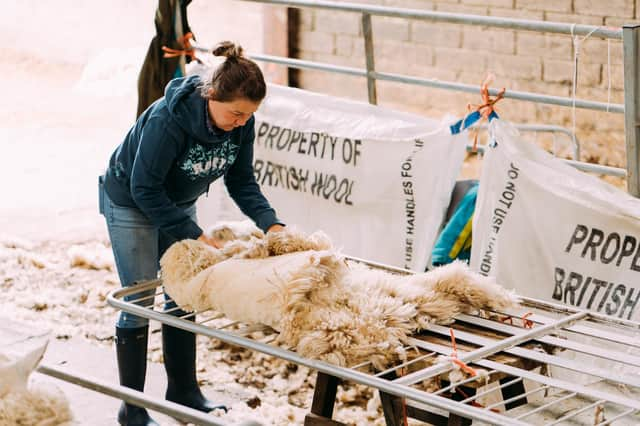Circular economy way ahead for farming - Alix Ritchie


I’m the health and education manager at Quality Meat Scotland, but I’m also a farmer. This gives me a unique perspective on how Scotland’s red meat industry is already adapting to the climate emergency, producing nutrient-rich red meat that’s deeply interconnected with natural cycles and ecosystems.
One solution that’s particularly grabbed my attention is changing from a linear to a circular economy – where, ultimately, what we take from the land is returned to help regenerate natural systems. It’s a popular model beyond the food sector.
Advertisement
Hide AdAdvertisement
Hide AdWe’re increasingly seeing it in clothing, household goods and waste, which is unsurprising given that research (The Aldersgate Report, July 2021, www.aldersgategroup.org.uk/asset/1941) has shown a circular economy could deliver 80 per cent of the additional emissions cuts needed to meet the UK’s Fifth Carbon Budget, which covers 2028-2032.
There’s a natural parallel between the principles of a circular economy and livestock farming. In Scotland, we’re guided by the seasons, the circle of life, the carbon cycle and the interlinked connections between plant, animal and human – all concepts rooted in the foundations of agriculture. One foundation is soil, which is paramount to our lives and requires careful management. Farmers can recycle the natural waste of animals to naturally fertilise fields as animals graze, or by collecting and processing it to eventually return to the soil as an organic fertiliser.
This natural fertiliser nourishes the soil and provides organic matter allowing the biodiversity below the soil to thrive. The organic fertiliser is also used to nourish the soil to grow crops and vegetables and is more sustainable than artificial fertilisers which are derived from fossil fuels.
Another example is that of grazing livestock. When cattle and sheep graze grass they trigger regrowth of the plant, causing the plant to go through the process of photosynthesis which draws in carbon dioxide from the atmosphere, stores it in the plants roots and eventually transfers it into the soil.
The benefits of grazing livestock go beyond carbon capture, such as helping to regenerate the natural environment, flood prevention and promoting natural habitats for wildlife like curlew and snipe by planting hedges and trees on farmland. As the RSPB notes, “Sheep grazing can be good for habitats; particularly if cattle are grazed with them.”
However, we do recognise that to become a truly circular economy there is still a very long way to go. We need to relearn ingrained behaviours and consider the life cycle of the products we use; whether that’s hiring and not owning goods such as farm machinery and tractors, reducing the amount of food wasted (currently a third of food we produce globally is wasted – Food and Agriculture Organisation of the UN) and rethinking fashion choices (the world currently consumers around 80 billion new pieces of clothing every year).
Scotland’s livestock farmers are passionate about looking after and protecting our iconic countryside, and it’s only by working in harmony with natural cycles that we can provide nutritious, local produce that benefits consumers, farmers, wildlife and the climate.
To help tell this story, we’ve created a short video to explain the natural cycles to schoolchildren and consumers alike. It’s available at education.qmscotland.co.uk/FarmingFoodsteps.
Alix Ritchie, QMS Health and Education Manager and farmer
Comments
Want to join the conversation? Please or to comment on this article.